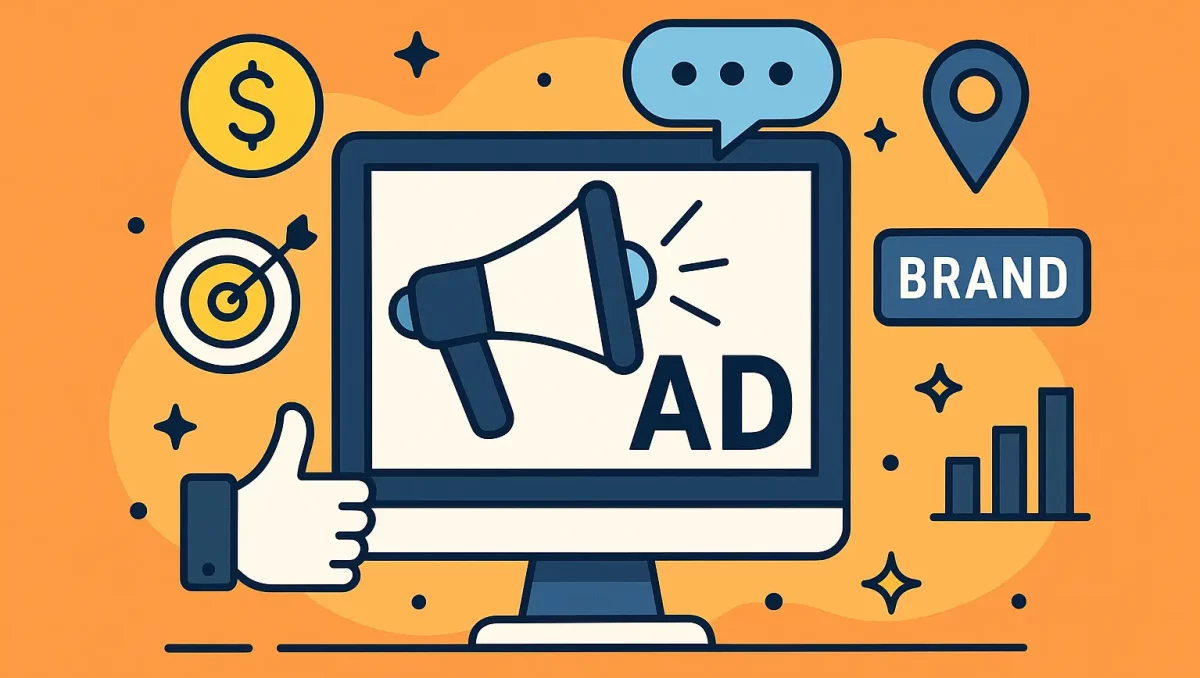I’m Kayla Sox. I run a tiny candle shop online. I also help two local businesses with ads. I’ve burned money. I’ve made money. I’ve cried over a dumb pixel. You know what? Some channels work. Some just look pretty. If you're a small business searching for a research-backed overview of effective ad platforms, the best online advertising channels to grow your small business article lays out solid starting points.
By the way, if you want another candid breakdown, here’s the full story of how I tested the best internet advertising so you don’t waste your budget.
Here’s the thing: I’ll share real numbers from my own tests. I’ll keep it plain. No fluff. Just what helped me sell more soy candles and what flopped.
Quick backstory (and why you can trust this)
My shop sells hand-poured soy candles. Clean burn. Cozy scents. Think cinnamon, rain, and library. I shoot my own photos on a wood table by the window. I ship from my garage. It smells like vanilla in there year-round.
I’ve run ads for:
- My candle store
- A friend’s mechanical keyboard kit launch
- A local workshop series for small teams
So I’ve tested things for both online sales and leads.
My scorecard summary
- Best for sales right now: Google Shopping + Meta retargeting
- Best for reach on the cheap: TikTok and YouTube
- Best for seasonal “I’ll buy next month”: Pinterest
- Best for nerdy niches: Reddit
- Best for B2B leads: LinkedIn
- Worst for me: Native ad networks (Taboola/Outbrain)
Now the real stuff. If you’re a fan of raw data, you might like this hands-on collection of advertisements to analyze with real examples—it’s loaded with screenshots and budgets.
If you want to see similar channel-by-channel breakdowns with sample budgets, check out HuntMads — their free guides helped me sanity-check my own numbers.
Google Search + Shopping: “People are already looking”
I started here. Folks type “soy candles” when they’re ready to buy. That helps.
What I ran:
- Search ads for “soy candles,” “non-toxic candle,” “gift candles”
- Shopping ads with clean photos on white
My 30-day candle test:
- Spend: $600
- CPC (per click): $0.58 (Shopping) / $1.40 (Search)
- Clicks: 1,034 (Shopping) / 171 (Search)
- Orders: 35 (Shopping) / 6 (Search)
- AOV: $26
- Return: about 1.6x on Shopping, 1.1x on Search
- Note: when paired with retargeting, total return went to about 2.2x
What worked:
- Clear product titles: “8oz Soy Candle – Cinnamon Roll – Clean Burn”
- Negative keywords: I blocked “free,” “DIY,” and “bulk.”
What bugged me:
- Search cost bounced around on weekends.
- Some clicks came from folks looking for “candle holders.” Not me.
If you sell something totally different—like supplements—the basics still apply; here’s how I actually advertise supplements on Google (what worked, what flopped) for comparison.
Verdict: Solid base. Not flashy. But steady.
Meta (Facebook + Instagram): “Retargeting is the butter”
My best wins here came from retargeting people who had visited my shop or watched my videos.
My 21-day candle test:
- Prospecting (cold):
- Spend: $400
- CPC: $0.82
- Orders: 14
- Return: 0.9x (meh)
- Retargeting (warm):
- Spend: $250
- CPC: $0.58
- Orders: 24
- Return: about 2.5x
Creative that hit:
- A 15-second pour shot with a match strike at the end
- A simple carousel: “No headache. Long burn. Real scent.” Short and punchy
Gotchas:
- Audience overlap will waste money fast. I excluded past buyers from cold sets.
- Broad targeting did fine once I had 50+ sales. Before that, it ate cash.
Verdict: Use it to finish the sale. Pair with Google.
TikTok Ads: “Cheap traffic, fun vibe, slower sales”
This felt like a busy farmer’s market. Lots of looks. Fewer buys that same day. Still, I like it.
My spark ad test with a creator video:
- Spend: $300
- CPC: $0.32
- Clicks: 937
- Orders: 9
- Return: 0.75x same day; more sales came later from email list
- Bonus: +612 followers, +284 email signups
Video that worked:
- Messy desk. Pouring wax. Cat tail in frame. Real life wins.
- Text on screen: “No soot. Warm cinnamon. Cozy night.”
Tip:
- Add a code like “TOK10” so you can track it. I saw late buys over two weeks.
One unexpected insight: TikTok’s lighter moderation means that even racy or borderline-NSFW clips can explode overnight on the For You page. If you want a concrete look at how that edge operates and the crazy engagement it can spark, skim through this gallery of viral TikTok nudes — it breaks down the hashtags, sounds, and framing creators use so you can borrow the attention-grabbing mechanics while keeping your ads brand-safe.
Verdict: Great for reach and list growth. Use it if you can wait a bit.
YouTube Ads: “Tiny cost per view, slow drip wins”
I ran skippable in-stream ads with a voiceover. Calm tone. Close-up flame. It felt like ASMR, but for candles.
My 10-day test:
- Spend: $150
- CPV (per view): $0.03
- View rate: 28%
- Clicks: 76
- Direct orders: 1
- But: brand search rose the next week by 23% and retargeting got cheaper
What I learned:
- It warms people up. Then Meta and Google pick them off later.
- Keep it to 15–20 seconds. Hook in 2 seconds or they’re gone.
If you’re curious about other streaming platforms, here’s what happened when I ran ads on Peacock—interesting contrasts on cost and targeting.
Verdict: Use for awareness, not quick sales.
Pinterest Ads: “Holiday hero, slow cook”
Pinterest users plan. They save. They buy later. This made me a little nuts, but it paid off near Black Friday.
My fall test:
- Spend: $200
- CPC: $0.44
- Clicks: 455
- Same-week orders: 8 (about 1.0x return)
- View-through and later sales: +12 more orders over 30 days
Creative that worked:
- Soft light. Cozy blanket. “Gift under $30.” Simple text over image.
- Pins keep working after ads stop. That part feels like magic.
Verdict: Great for gifts and decor. Give it time.
Reddit Ads: “Great for geeky stuff, honest crowd”
I used this for my friend’s mechanical keyboard kit. We targeted r/MechanicalKeyboards and r/ErgoMechKeyboards.
Two-week test:
- Spend: $500
- CPC: $0.55
- Clicks: 907
- Orders: 9
- AOV: $120
- Return: about 2.2x
- Side note: Comments can be spicy. We answered fast and kept it chill. (When I tried Brazzers advertising I saw the same blunt honesty—different niche, same vibe.)
What helped:
- Plain text, no fluff: “Hot-swap kit. Aluminum. South-facing. Ships in 5 days.”
- A short GIF of the typing sound (thock fans loved it)
Verdict: If your niche lives on Reddit, this rocks.
Newsletter Sponsorships: “Smaller lists, warmer buyers”
I paid to sponsor a home decor email. Not huge. But readers cared.
My one-off test:
- Cost: $350
- List size: ~35k
- Opens: ~19k
- Clicks: 402
- Orders: 17
- Revenue: $476
- Return: about 1.36x
- Bonus: +210 new subscribers to my list
What made it work:
- A clear offer: “Free tin sampler with 2 candles.”
- A cozy photo that actually matched the vibe of the newsletter
Verdict: Good add-on. Not

